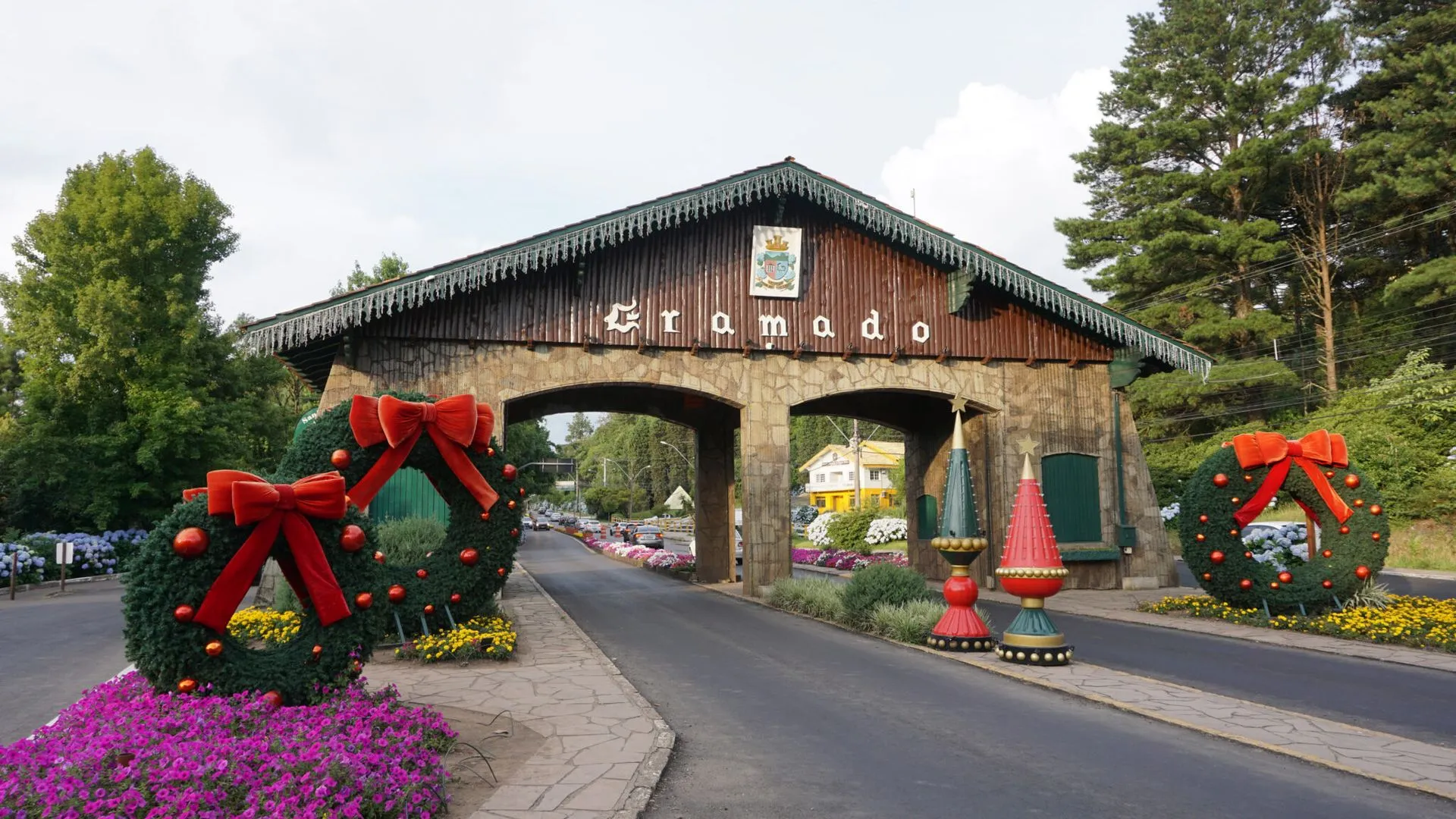Destinations & Things To Do
19 Cheapest Travel Destinations for German Travellers from August to December 2025

Monday, August 4, 2025
For German travelers looking to explore new destinations in 2025, several European countries offer exceptional experiences without breaking the bank. Countries like Hungary, Poland, Portugal, Bulgaria, Croatia, Latvia, and Romania provide an ideal mix of cultural immersion, scenic beauty, and affordability. These destinations are not only easily accessible but also offer a favorable currency conversion rate for German tourists, ensuring that their travel budgets stretch further. Whether seeking historical landmarks, vibrant cities, or breathtaking landscapes, these 19 countries offer diverse options for all types of travelers. This article will guide German visitors through the best places to visit, what to expect in terms of currency exchange, and other key travel tips for a seamless experience across Europe in 2025.
| Category | Details | Estimated Cost |
|---|---|---|
| Currency Updates | EUR to USD: 1 EUR = 1.1404 USD | – |
| EUR to GBP: 1 EUR = 0.8730 GBP | – | |
| EUR to INR: 1 EUR = 101.0606 INR | – | |
| EUR to JPY: 1 EUR = 157.34 JPY | – | |
| Trip Cost Estimates | Flight (Round-trip): Economy class from Germany to Lisbon | €195–€277 |
| Accommodation: 3-star hotel (average 3 nights) | €180–€240 | |
| Daily Expenses: Meals, local transport, attractions (per day) | €50–€80 | |
| Total Estimated Cost: For a 5-day trip (excluding shopping and optional activities) | €500–€700 |
1. Budapest, Hungary
A stunning combination of history, culture, and natural beauty, Budapest remains a favorite destination for budget travelers. The Hungarian capital boasts elegant architecture, picturesque river views, and a rich cultural heritage. With affordable public transport, reasonably priced accommodations, and inexpensive food, Budapest is perfect for those looking to explore a European capital without the high price tag.
- Why visit?
Explore the Buda Castle, relax in the Széchenyi Thermal Baths, and enjoy the vibrant nightlife on the Danube River. - Estimated daily budget: €50-70
- Top tips: Visit local markets for cheap meals and explore the city on foot or by using the affordable public transport system.
2. Kraków, Poland
One of the most historically significant cities in Poland, Kraków offers a fantastic mix of medieval charm, rich history, and beautiful architecture. Famous for its UNESCO-listed Old Town, historic Wawel Castle, and the Auschwitz-Birkenau Memorial, Kraków is both affordable and culturally enriching.
- Why visit?
Walk through the historic Main Market Square, visit the Kazimierz Jewish Quarter, and explore the Wieliczka Salt Mine. - Estimated daily budget: €40-60
- Top tips: Take advantage of free walking tours and explore local eateries for affordable, authentic meals.
3. Lisbon, Portugal
Lisbon, with its picturesque neighborhoods, historic trams, and vibrant culture, is one of the most affordable capitals in Western Europe. The city’s mix of traditional and contemporary elements, combined with its welcoming atmosphere, makes it an excellent destination for travelers on a budget.
- Why visit?
Explore the Alfama district, visit the Belem Tower, and take a tram ride through the hilly streets of Bairro Alto. - Estimated daily budget: €60-80
- Top tips: Use the Lisboa Card for discounts on attractions and public transport.
4. Sofia, Bulgaria
Sofia, the capital of Bulgaria, is a city steeped in history and offers an affordable experience for travelers. With its mix of Roman, Byzantine, and Ottoman heritage, the city is a cultural treasure trove. The cost of living in Sofia is significantly lower than in most other European capitals, making it an excellent option for those seeking a budget-friendly trip.
- Why visit?
Visit the Alexander Nevsky Cathedral, explore the Boyana Church, and hike up Vitosha Mountain for panoramic views of the city. - Estimated daily budget: €30-50
- Top tips: Enjoy inexpensive public transport and indulge in the local cuisine, such as banitsa (a traditional pastry) and shopska salad.
5. Belgrade, Serbia
Known for its lively atmosphere and vibrant nightlife, Belgrade is one of the most affordable capital cities in Europe. The city is brimming with cultural and historical landmarks, from the Kalemegdan Fortress to the Republic Square. Belgrade’s combination of budget prices and an exciting cultural scene makes it a fantastic option for travelers looking for both relaxation and adventure.
- Why visit?
Walk along the Danube River, enjoy the Skadarlija bohemian street, and explore the Nikola Tesla Museum. - Estimated daily budget: €40-60
- Top tips: Take advantage of the cheap and efficient public transport and enjoy drinks at one of the many floating bars on the river.
6. Riga, Latvia
Riga, the capital of Latvia, offers a unique blend of medieval architecture, art nouveau buildings, and a modern cultural scene. As one of the cheapest cities in the Baltic States, Riga provides visitors with a rich historical experience, great food, and plenty of entertainment options, all without the hefty price tag.
- Why visit?
Admire the House of Blackheads, stroll through the Riga Central Market, and visit the Latvian Ethnographic Open-Air Museum. - Estimated daily budget: €40-60
- Top tips: Stay in affordable hostels or guesthouses, and enjoy the many free walking tours around the city.
7. Zagreb, Croatia
Zagreb is an underrated gem in Croatia, offering a charming Old Town, fascinating museums, and vibrant cafes. While it’s not as popular as the coastal cities, it provides a fantastic introduction to Croatia‘s culture at a much lower cost.
- Why visit?
Explore the Ban Jelačić Square, visit the Mimara Museum, and relax in Zrinjevac Park. - Estimated daily budget: €50-70
- Top tips: Take advantage of free cultural events and festivals, which often happen during the summer and fall months.
8. Skopje, North Macedonia
Skopje, the capital of North Macedonia, is a city that blends old-world charm with modern development. Known for its unusual architecture and quirky statues, Skopje is an excellent destination for those seeking an affordable trip with a unique cultural atmosphere.
- Why visit?
Explore Stone Bridge, visit the Mother Teresa Memorial House, and walk around the Old Bazaar. - Estimated daily budget: €30-50
- Top tips: Enjoy inexpensive local food such as tavče gravče (baked beans) and ajvar (pepper spread).
9. Tirana, Albania
Tirana, the capital of Albania, has grown in popularity in recent years as a budget-friendly destination for travelers. The city is known for its vibrant atmosphere, colorful architecture, and welcoming locals, making it a great spot for those looking for a different experience in Europe.
- Why visit?
Take in the views from Dajti Mountain, visit the National History Museum, and stroll through Skanderbeg Square. - Estimated daily budget: €30-50
- Top tips: Stay in affordable accommodations in the city center and explore the bustling markets for inexpensive souvenirs.
10. Vilnius, Lithuania
Vilnius, the capital of Lithuania, is a hidden gem in the Baltic States. With its baroque architecture, charming cobbled streets, and vibrant cultural scene, Vilnius offers visitors a lot for a fraction of the price of other European capitals.
- Why visit?
Explore the Vilnius Old Town, visit the Gediminas Tower, and enjoy the bohemian vibe in the Uzupis district. - Estimated daily budget: €40-60
- Top tips: Take advantage of the free walking tours and try the local cepelinai (potato dumplings) in budget-friendly restaurants.
11. Sarajevo, Bosnia and Herzegovina
Sarajevo, a city known for its rich history and cultural diversity, is a budget-friendly destination that offers travelers an insight into the fascinating Ottoman and Austro-Hungarian influences on the region. The low cost of living in Sarajevo makes it an affordable place to visit.
- Why visit?
Visit the Baščaršija old bazaar, explore the Sarajevo Tunnel Museum, and enjoy the tranquil Vrelo Bosne park. - Estimated daily budget: €30-50
- Top tips: Take advantage of local food markets and cafes for affordable meals and snacks.
12. Bucharest, Romania
Bucharest, the capital of Romania, offers a blend of traditional and modern culture, with its grand boulevards, neoclassical architecture, and Soviet-era structures. Known as the “Paris of the East,” Bucharest offers an affordable way to explore a vibrant European city.
- Why visit?
Visit the Palace of the Parliament, explore Herăstrău Park, and enjoy the nightlife in the Old Town. - Estimated daily budget: €40-60
- Top tips: Opt for affordable public transport and enjoy cheap local eats such as sarmale (cabbage rolls) and mămăligă (cornmeal dish).
13. Chisinau, Moldova
Chisinau, the capital of Moldova, is an undiscovered treasure in Eastern Europe. The city offers Soviet-era architecture, charming parks, and a lively café culture. With its low cost of living, Chisinau is an ideal destination for budget travelers.
- Why visit?
Discover the Stefan Cel Mare Park, visit the National Museum of History, and explore the Cricova Winery. - Estimated daily budget: €25-40
- Top tips: Stick to local eateries for budget meals and take public transport for affordable travel around the city.
14. Budapest, Hungary
Another affordable option in Eastern Europe is Budapest, a city known for its grandeur and history. It offers visitors a mixture of stunning architecture, rich culture, and delicious food, all at affordable prices.
- Why visit?
Relax in the Széchenyi Thermal Bath, explore Buda Castle, and enjoy a river cruise on the Danube. - Estimated daily budget: €50-70
- Top tips: Opt for a Budapest Card for discounts on public transportation and entrance fees to major attractions.
15. Prague, Czech Republic
The Czech Republic’s capital city, Prague, remains one of the most budget-friendly destinations in Europe. Its combination of Gothic architecture, charming streets, and affordable food and drink makes it a perennial favorite for travelers.
- Why visit?
Walk across the Charles Bridge, visit the Prague Castle, and enjoy a pint of Czech beer in one of the city’s many pubs. - Estimated daily budget: €50-70
- Top tips: Visit during the shoulder season (late summer or early autumn) for fewer crowds and lower prices.
16. Vilnius, Lithuania
Vilnius, with its baroque architecture and charming streets, offers an incredible cultural experience without the hefty price tag. The city’s low cost of living makes it an attractive destination for those on a budget.
- Why visit?
Explore the Vilnius Old Town, visit the Gediminas Tower, and enjoy the city’s thriving café culture. - Estimated daily budget: €40-60
- Top tips: Use public transport for easy and affordable travel across the city and stay in guesthouses or budget hotels.
17. Tirana, Albania
Tirana, Albania’s capital, is an increasingly popular destination for budget travelers, offering vibrant street art, Ottoman-era buildings, and a welcoming atmosphere. The cost of living in Tirana is low, making it a great destination for those seeking an affordable vacation.
- Why visit?
Stroll through Skanderbeg Square, visit the National History Museum, and explore Mount Dajti. - Estimated daily budget: €30-50
- Top tips: Enjoy meals at local eateries and take advantage of free cultural events.
18. Bucharest, Romania
Bucharest offers a mix of traditional and modern attractions, including historical sites, parks, and a growing nightlife scene. Visitors can enjoy an authentic European experience without the high costs.
- Why visit?
Visit the Palace of Parliament, stroll through Herăstrău Park, and explore the charming Old Town. - Estimated daily budget: €40-60
- Top tips: Stick to public transport and explore affordable local markets and eateries for cheap meals.
19. Belgrade, Serbia
Known for its vibrant nightlife, rich history, and affordable prices, Belgrade is a top destination for travelers looking for a mix of culture and excitement without breaking the bank.
- Why visit?
Walk along the Danube River, enjoy the Kalemegdan Fortress, and explore the lively Skadarlija street. - Estimated daily budget: €40-60
- Top tips: Stay in guesthouses or budget hotels and enjoy the vibrant street food scene.
1. Cost-Effective Travel
One of the most significant benefits for German travelers is the affordability of these destinations. With lower accommodation costs, cheaper food options, and affordable transportation, these places make it easier for travelers to stretch their budgets without sacrificing comfort or experiences. For those living in Germany, which is part of the Schengen Area, traveling to these countries is often more cost-effective because of low-cost airlines and train connections. Countries like Poland, Hungary, and Romania offer exceptionally low costs for both accommodation and daily expenses compared to Western Europe, making them excellent value-for-money options.
2. Ease of Access and Travel
Since many of these affordable destinations are located within Europe, German travelers benefit from easy access via short flights or train travel. For those who prefer not to fly, many of these destinations can be reached by train, offering a scenic and comfortable journey through Europe. With the Schengen visa allowing unrestricted travel between European countries, German travelers can easily hop between countries like Czech Republic, Poland, Lithuania, and others without additional visa requirements.
3. Rich Cultural Heritage
These budget destinations are not just affordable; they also offer rich cultural experiences. Cities like Kraków, Budapest, and Sarajevo provide deep insights into history, art, and architecture that are often overlooked by mass tourism. For German travelers interested in history and culture, these cities offer plenty of museums, historical landmarks, galleries, and local traditions to explore at a fraction of the cost of other European capitals. German travelers who appreciate European heritage will find these destinations full of hidden gems that offer a unique blend of the old and new.
4. Scenic Beauty at Lower Costs
Many of the destinations listed, like Albania, Macedonia, and Bosnia and Herzegovina, are known for their natural landscapes, including mountain ranges, lakes, and coastal views. For German travelers who enjoy nature and outdoor activities, these countries provide incredible opportunities for hiking, swimming, and exploring unspoiled landscapes. The cost of outdoor activities is often lower than in other European countries, allowing travelers to experience stunning natural beauty without high entrance fees or equipment costs. From the beaches of Albania to the mountains of Montenegro, these locations allow travelers to immerse themselves in nature while enjoying budget-friendly prices.
5. Less Crowded, More Authentic Experiences
Unlike Western European capitals, which often suffer from overcrowding, many of these affordable destinations are still relatively undiscovered by mass tourism. German travelers will appreciate the opportunity to explore less crowded cities and towns, where they can enjoy a more authentic experience of local life. For example, Vilnius and Belgrade provide a more relaxed atmosphere, free from the usual tourist traps, where visitors can interact with locals, visit local markets, and dine in authentic restaurants. These off-the-beaten-path destinations allow travelers to immerse themselves in local culture without the hassle of large tourist crowds.
6. Diverse Culinary Delights at Affordable Prices
For food lovers, these destinations offer a chance to indulge in delicious local cuisines at a fraction of the price one might pay in more tourist-heavy destinations. In countries like Serbia, Poland, and Portugal, street food and local restaurants offer tasty meals at very affordable rates. German travelers who enjoy trying new cuisines will find plenty to explore, from the hearty dishes of Romania to the exquisite pastries in Lithuania. The cost of dining out is significantly lower than in Germany, making it possible for travelers to enjoy gourmet meals and local delicacies without worrying about overspending.
7. Affordable Accommodation Options
Finding budget accommodation is a priority for most travelers, and these destinations excel in providing cheap but quality lodging options. Whether it’s a guesthouse in Bosnia, an apartment in Budapest, or a hostel in Lithuania, German travelers can rest assured that their accommodation will not eat up a significant portion of their travel budget. Many of these countries offer a wide range of budget hotels, hostels, and Airbnb options that allow travelers to stay in comfortable and well-located accommodations for lower prices than those found in other European cities. In cities like Zagreb or Sarajevo, travelers can enjoy staying in charming neighborhoods that are close to local attractions while paying affordable rates.
8. Vibrant Nightlife and Entertainment
While affordability is a key factor, these destinations also provide a vibrant nightlife and entertainment scene, especially in cities like Belgrade, Prague, and Budapest. German travelers looking for a lively nightlife experience will enjoy these destinations’ bars, clubs, and live music venues, all at affordable prices. In some cities, such as Kraków and Vilnius, the nightlife is not only budget-friendly but also culturally rich, with opportunities to experience traditional music, dance, and other local cultural performances.
9. Easier Visa Process for German Travelers
For German travelers, many of these countries benefit from simplified visa requirements. As Germany is part of the Schengen Area, many of these destinations—such as Poland, Hungary, Czech Republic, and Slovenia—allow visa-free travel for German passport holders. This makes travel planning even easier, as German citizens do not need to go through the hassle of applying for a visa for short stays, making these countries even more accessible for spontaneous trips or weekend getaways.
10. Rich History and Cultural Exploration
For those who enjoy cultural tourism, many of these destinations offer rich historical landscapes. Cities like Kraków and Budapest boast UNESCO World Heritage sites, while Sarajevo and Belgrade are known for their significant historical events and landmarks. German travelers will appreciate the opportunity to delve into the local history and heritage, visiting fortresses, museums, and historical districts at affordable entry fees. Whether it’s learning about Ottoman influences in Serbia or exploring the medieval streets of Tallinn, these destinations provide a deep cultural experience without the expensive admission fees often found in more tourist-heavy spots.
11. Festivals and Events at Lower Costs
For German travelers who enjoy attending festivals, many of these affordable destinations host annual events that celebrate their unique cultural and historical traditions. In Romania, the Transylvania International Film Festival is a must-visit for film enthusiasts, while Poland’s Kraków Film Festival showcases international cinema. In Serbia, travelers can enjoy music festivals and traditional fairs that bring the culture to life. These festivals often feature low-cost tickets or even free entry, making them highly accessible for those on a budget.
12. Access to Stunning Natural Landscapes
For outdoor enthusiasts, many of these destinations are perfect for those who enjoy nature-based activities like hiking, swimming, and skiing. Countries like Albania, Macedonia, and Montenegro boast stunning natural beauty, including mountain ranges, lakes, and beaches. German travelers will appreciate the opportunity to explore these diverse landscapes at an affordable cost. The cost of guided tours, equipment rentals, and outdoor activities is often much lower than in other European destinations, providing excellent value for nature lovers.
An Affordable Yet Unforgettable European Journey for German Travelers
With its rich cultural heritage, stunning landscapes, and vibrant cities, these 19 budget-friendly travel destinations offer German travelers the opportunity to experience the best of Europe without overspending. From charming towns to historic landmarks, affordable transportation, and cheaper accommodation, these destinations combine both value and experience. Whether seeking a cultural escape, a relaxing holiday by the sea, or an adventurous hiking trip, these cities provide the perfect balance of adventure, culture, and affordability. With the added benefit of easy access from Germany and lower travel costs, these destinations should be at the top of any German traveler’s list for 2025.
Destinations & Things To Do
The 10 Best Hidden-Gem Wine Country Travel Destinations in 2025

The search for your next great vacation never stops. While we all love traveling to destination wine regions such as Napa Valley, Sonoma, Champagne and Tuscany, plenty of up-and-coming wine regions are worthy of their own entire trip. Wine Spectator asked top sommeliers and wine pros about the less-trodden wine regions that they would visit again in a heartbeat. Their suggestions ranged from the picturesque villages of Alsace to the Mediterranean island of Sardinia to Mexico’s retro-yet-innovative Valle de Guadalupe. Check out their picks and get ready to book your tickets!
10 Wine Country Travel Destinations to Visit in 2025
- Alsace, France
- Canary Islands, Spain
- Douro, Portugal
- Finger Lakes, New York
- Jura, France
- Puglia, Italy
- Rhône-Alpes, France
- Roussillon, France
- Sardinia, Italy
- Valle de Guadalupe, Mexico
Alsace, France
“I would absolutely recommend Alsace, France, for a wine-focused trip with gorgeous views, a rich culinary tradition and an abundance of wine! Biking along the Alsace Wine Route through the Vosges Mountains is an ideal way to get a sense of terroir and to see so many beautiful vines. The charming, fairytale-like towns like Ammerschwihr have a plethora of winemakers, so you can hop from cellar to cellar trying the diverse range of styles that come from this region.”—Sammi Schachter, beverage director of 2025 Best of Award of Excellence winner Nudibranch, New York City
“Alsace, France, located on the northeastern border between France and Germany, is one of the most historically and culturally rich wine regions of the world. It’s impossible not to be romantic about Alsace. The diversity of genetic material, grape varieties, geological options and variations in terms of soil type is the penultimate jackpot for wine travel. Due to tumultuous political and cultural events of the 19th and 20th centuries, the wine culture is one of great interest and intrigue. One could visit Alsace many times and leave so much unexplored. Really high-caliber winemaking with earnest approaches to farming. The idyllic village and town centers, a perfect backdrop for a fun-packed adventure. La Confrérie Saint-Étienne, a 60,000-bottle library dating back to 1834 in a 12th-century castle, is as good as it gets in terms of visits.”—Nader Asgari-Tari, director of wine for BCB3 Hospitality, including 2025 Best of Award of Excellence winner Zurito, Boston
“Alsace, France! This proud French wine region offers a unique ‘double culture,’ blending French heritage with German influence. The city of Strasbourg is both beautiful and lively, while the surrounding countryside is dotted with small, charming villages nestled among the hills of Grand Cru vineyards. Visitors will find Michelin-starred dining, warm hospitality and a deep sense of tradition. Many winemakers here represent the 15th, 16th or even 17th generation of their family. Alsace also produces some of the most age-worthy white wines in the world, and local wine lists feature rare bottles you won’t find anywhere else.”—Sarah Foote, director of wine and service for Harvest, Morristown, Ariz.
Canary Islands, Spain
“The Canary Islands are an underrated wine region where volcanic soils, native grapes like Listán Negro and stunning Atlantic views create a truly distinctive wine experience. The ash- and mineral-rich terrain gives the wines a salty, smoky character that’s hard to find elsewhere. Add vibrant local cuisine and a relaxed island atmosphere, and it becomes a must-visit for wine lovers.” —Heather Rivas, wine director of Award of Excellence winner Boulon Brasserie, Tampa, Fla.
Douro Valley, Portugal
“I would say Douro, Portugal, where I most recently visited. First of all, it is a beautiful place to visit, with such welcoming people. I think Portuguese wines in general are very underrated right now. There are so many good wines from the Douro Valley: It varies from a complex, bright, crispy, citrus-driven white Rabigato to a dark-fruited, structured red Touriga Nacional. Of course, my favorite fortified wine, Port, is also found here. I also think you can find the ultimate value from Portuguese wines [in terms of] price and quality.” —Steve Kim, head sommelier at Kuma Hospitality Group, including Best of Award of Excellence winner l’abeille, New York City
Finger Lakes, New York
“For lovers of wine and the places they come from, the Finger Lakes region of New York State is a must-visit. Beyond the idyllic scenery of the area, the region is warm-hearted: there’s a clear sense of community amongst the growers and winemakers. And I’m happy to report that they are more than generous to visitors. It is very simple to spend a day tasting world-class quality dry and off-dry Riesling, Pinot Noir, Cabernet Franc, Chardonnay and other colder-climate varieties. I’m very drawn to how the community is focused on the future of viticulture. The Finger Lakes is a center for research on climate change, hybrid varieties and clonal selection, and getting to experience it all first-hand is both educational and highly enjoyable.”—Matt Turner, wine director of Lei, New York City
“As far as up-and-coming wine regions go, the Finger Lakes of upstate New York are at the top of my list. The wines are spectacular, affordable and fun! World-class Riesling is their calling card for sure, but other whites such as Chardonnay, Gewürztraminer and Pinot Gris, as well as a handful of reds—especially Cabernet Franc and Blaufränkisch—are well worth seeking out. Outside of the wine scene, the landscape is gorgeous, and nature-lovers have endless choices for exploration. Ithaca, home to Cornell University, is the ultimate quirky college town, with endless options for shopping and dining. Speaking of dining, my top recommendations are the incomparable FLX Table in Geneva on the north side of Seneca Lake, run by Master Sommelier Chris Bates, the legendary Moosewood in Ithaca and Hazelnut Kitchen in Trumansburg.”—Evan White, wine director for Best of Award of Excellence winner Bludorn, and Award of Excellence winners Navy Blue and Bar Bludorn, Houston
Jura, France
“One of the most underrated wine regions for travel is the Jura, tucked away in eastern France between Burgundy and the Swiss border. This hidden gem offers a mix of rustic character, alpine beauty and distinctive wines. Visiting the iconic wineries of Château-Chalon, where the story of vin jaune began, is a must. What makes the Jura so special is its authenticity with small, family-run domaines, centuries of tradition, beautiful scenery and, of course, incredible Comté cheese. It was also home to Louis Pasteur, and more people should visit to experience a place that feels untouched, with world-class wines, rich history and an unspoiled cultural experience.”—Chris Belk, wine director of Grand Award winner Bern’s Steak House, Tampa, Fla.
Puglia, Italy
“The first thing that came to mind for me was Puglia, Italy. Our founders, Tom Angelo and his daughter Kassidy Angelo, love the region and speak so fondly of it. I haven’t spent time there myself, but their love for it has made it top of the list for me. Puglia has beautiful sun-drenched beaches, rich gastronomy—including what many consider the best olive oil in Italy—diverse cultural history, ancient Roman ruins and a winemaking tradition dating back to Greek settlements in the area, pre-Roman times. It’s everything you’d want in a travel destination for food and wine lovers. Wine production [in Puglia] in the last 20-plus years has experienced a renaissance, with assistance from the EU. Some producers are moving away from bulk wine production and shifting toward quality and estate-level winemaking while still maintaining great value. While red wine dominates, led by Primitivo and Negroamaro, there is also high-quality rosato from Bombino Nero and refreshing whites from Verdeca emerging from the region. It’s well worth a visit.” —Daniel Bishop, wine and beverage director of Best of Award of Excellence winners Daniel’s, A Florida Steakhouse, Fort Lauderdale, Fla., and Daniel’s Miami, Coral Gables, Fla.
Rhône-Alpes, France
“The most underrated wine region for travel is the Rhône-Alpes. It’s not only home to exceptional wines, from the Rhône Valley to Savoie, but also offers a very rich food culture, stunning Alpine landscapes and year-round outdoor activities like skiing, hiking, lakes. In three hours, you can be at the beach too! The region blends rustic charm with amazing culinary experiences, making it a must-visit for wine lovers and people who love nature and landscapes. As a native, I can safely say it’s one of France’s best-kept secrets.” —Adrien Falcon, general manager of Arvine, New York City
Roussillon, France
“For me, it starts and ends with a trip to Roussillon, the southernmost region in France and [part of] Northern Catalonia. Beyond the sun that’s ever shining, the region is home to a deeply underrated food and wine scene in Perpignan, scenic coastlines in Banyuls and Collioure, the winding roads of the Pyrenees Mountains, and, importantly, is easily accessed by train from both Paris and Barcelona. As it feels generally less commercial here, it might be a little more challenging to make winery/vineyard visits unless you have some French to get around with, but that’s offset by many of the local restaurants and bars sourcing largely from winemakers of the region. People are extremely welcoming in the South, and I honestly think you can get a sense for that in the wines they make: sun-kissed, generous of fruit, always with a sense of salt and brine from the sea, and quite often at a very fair price.
My favorite stops, if I’m allowed: Manat, Baston and Mamenakane for dinner, Lady Jaja for the party following, and El Xadic Del Mar in Banyuls-sur-Mer for lunch the morning after, with a swing through La Boutique de la Guinelle for some souvenirs.” —Andy Schwartz, partner and wine director of Baby Bistro, Los Angeles
Sardinia, Italy
“Sardinia stands at the top of my list for dream wine destinations. The modestly sized Mediterranean isle is home to not just pristine white sand beaches, but also some of my favorite representations of island wine: Vermentino di Gallura, Vernaccia di Oristano, Cannonau di Sardegna and Carignano del Sulcis. Consistently mineral-driven, aromatically enticing and just a downright joy to drink, Sardinian wines can be perfectly balanced between fruit and funk. Not only are they delicious and scream for food, but these wines can easily compete with their more popular Sicilian cousins to the south. Take note, before the algorithms catch on any more!” —Calvin Barnett, wine director of 2025 Award of Excellence winner PERILLA Korean American Steakhouse, Chicago
Valle de Guadalupe, Mexico
“The most underrated wine region to visit is the Valle de Guadalupe in Baja California. While there has been wine made there for a long time, it’s really an up-and-coming region. It feels to me a lot like what I assume Napa felt like in the 1960s and ’70s. Creativity and experimentation are through the roof. A hidden gem in the area is a little family-run winery with a hidden patio: Bodegas F. Rubio.” —Jeremy Hansen, sommelier at Grand Award winner the Grill, New York City
Keep up with the latest restaurant news from our award winners: Subscribe to our free Private Guide to Dining newsletter!
Destinations & Things To Do
Why I’m Going to Hike My First Thru Hikes in Foreign Countries

Yo! My name’s Izzy and I am an avid hiker from New England. I got the idea of going on a thru hike when my friend regaled me her mythical tales of the PCT in 2023. It was the first time I had ever even heard of a thru hike. That was 2 years ago when she was leading a trip in the Grand Canyon I was on, the first backpacking or hiking trip I had ever been on.
I then dove head first into learning about all kinds of thru hikes. Then, last year, my friend returned from doing the AT in one summer in 2024. I listened to his stories with the same wide eyes I had listening to the PCT stories. I made a promise to myself that the following year I would complete a thru hike, regardless of the length or location. So now I’m here, fulfilling that promise to myself.
The Hikes
In the time between last summer’s end and now, I studied the list of hikes I had created in my research of the endless trail lists on the internet. One stood out to me: The Skye Trail. The Skye Trail follows the length of the Isle of Skye in Scotland. Adding up to about 80 miles while traversing some 10k+ ft of gain, I thought it would be a great choice for a first thru hike. I was even confident in my ability to weather the endless rain that seems to envelope Scotland (I studied in Ireland the spring before and did plenty of hiking in pouring rain there). Yet, I wasn’t confident enough to go solo, so I asked my friends to join me in this journey. Both of them replied enthusiastically that they would love to join. I was elated and began planning immediately.
In the meantime, in the desire for even more thru hiking, I began to plan for another hike. At the time, I was thinking of doing the New England trail. It was close to home and felt safe to tackle solo. All the while, I would complete it a few weeks before going to Scotland gaining invaluable thru hiking experience. Unfortunately, due to work circumstances and other plans, I had to scrap that idea.
I began to mull over the opportunities I had this upcoming summer. That’s when my family received an invitation to my cousins wedding in France. Ecstatic about the wedding, I thought I could possibly fit a thru hike in after the ceremony. I learned that the festivities would wrap up with one week remaining until I had to be in Scotland. Afraid due to my own inexperience, I decided I would be doing a thru hike in France.
My Choice
I immediately booked it to google to find a trail. They were all too complicated to reach transportation wise or too long for me to complete comfortably within 6 days. Then the perfect trail fell right into my lap: the GR21. Following the beautiful, alabaster cliffs of Normandy, it would emulate the coastal conditions very well of a hike in Scotland (minus all the rain). The trail will require me to hike around 17-20 miles a day. The elevation per day is only around 1.5k+ feet of gain though. From training in the Whites, 20 miles a day with that much gain felt completely manageable over 6 days.
Though I will still be pushing myself physically, my biggest hurdle will be to get myself through this mentally. I know it is not long, and I cross several towns I can resupply at and ask people questions, but navigating a foreign countries hiking and camping laws and of course trying to communicate in a language I do not know even with the technology we have available today can be very difficult. So I am definitely feeling pre-trail jitters, but I am excited to make this commitment to myself to complete this trail solo.
My Hope
I hope I stick with this itinerary and grow to be a more experienced thru hiker after it. I can’t wait to continue to share the story of my journeys with you. Hiking and backpacking has encouraged me to become a better person and I hope these trails continue that trend. I hope the retelling of this journey can get you outdoors, wherever you are, too.
See you again on trail,
Izzy.
This website contains affiliate links, which means The Trek may receive a percentage of any product or service you purchase using the links in the articles or advertisements. The buyer pays the same price as they would otherwise, and your purchase helps to support The Trek’s ongoing goal to serve you quality backpacking advice and information. Thanks for your support!
To learn more, please visit the About This Site page.
Destinations & Things To Do
Brazil Travel Destinations 2025 : Culture, Nature & Authentic Experiences Lead Tourism Revival

The sun-drenched beaches of Rio, the thunderous roar of Iguaçu Falls, and the cobblestone charm of Gramado aren’t just postcard backdrops anymore. In 2025, Brazil’s tourism sector is surging back, driven by travelers craving immersive cultural exchanges and untouched natural wonders. Data from Embratur (Brazilian Tourist Board, May 2025) reveals a 34% year-on-year increase in international arrivals, with destinations prioritizing sustainability and local authenticity leading the resurgence.
Brazil’s Tourism Resurgence in 2025
Brazil’s 2025 tourism boom reflects a global shift: travelers now seek meaningful connections over superficial sightseeing. A recent Latin American Travel Association report (April 2025) notes 78% of tourists prioritize “cultural immersion” and “eco-conscious itineraries.” Rio de Janeiro exemplifies this, blending iconic landmarks like Cristo Redentor with new accessibility tech. Augmented reality tours in 15 languages now enrich visits, while safety upgrades have boosted family travel by 40%. Similarly, Foz do Iguaçu’s eco-revamp—including solar-powered boat tours and jaguar conservation trails—has made it South America’s fastest-growing adventure hub.
Top Brazil Travel Destinations for 2025
Rio de Janeiro remains unmissable. Beyond Copacabana, favela-led culinary tours and samba workshops offer raw cultural insights. Foz do Iguaçu leverages its “Three Borders” location for tri-national festivals, while rainforest lodges partner with Indigenous Guaraní communities.
Northeastern gems like Maragogi (Alagoas) and Jericoacoara (Ceará) dominate coastal searches. Travel analytics platform Kayak reports a 200% surge in bookings for Praia do Forte, where sea-turtle sanctuaries and capoeira classes redefine beach holidays.
Inland, Bonito (Mato Grosso do Sul) sets ecotourism gold standards. Government-mandated visitor caps protect its crystalline rivers, and certified guides lead cave-diving expeditions. Meanwhile, Gramado’s European flair peaks during its “Natal Luz” festival, now enhanced with AI-driven light installations and zero-waste initiatives.
Why Authenticity and Sustainability Drive Demand
Young travelers are reshaping Brazil’s tourism DNA:
- Eco-accountability: Bonito’s carbon-neutral certification (per Brazil’s Environment Ministry) has increased repeat visits by 60%.
- Tech-enabled access: Apps like “Brazil Offline” curate hyperlocal experiences, from Amazonian foraging trails to Salvador’s Afro-Brazilian cooking classes.
- Community-led tourism: In Paraty, UNESCO-listed historic tours now feature quilombola (descendants of enslaved Africans) storytellers.
Domestic demand is equally vital. Embratur’s “Viaje pelo Brasil” campaign has spurred a 55% rise in local bookings since 2023, with Northeastern states seeing record occupancy.
Brazil’s travel renaissance proves that destinations thriving in 2025 aren’t just scenic—they’re soulful. From the misty cascades of Iguaçu to Gramado’s alpine charm, Brazil travel destinations now marry spectacle with substance. As sustainability and storytelling become non-negotiables, the nation’s $50B tourism rebound (World Travel & Tourism Council, 2025) sets a global benchmark. Ready to explore beyond the obvious? Book your Brazilian journey through certified eco-operators today—adventure with purpose awaits.
Must Know
What are Brazil’s safest travel destinations in 2025?
Rio de Janeiro, Florianópolis, and Bonito lead safety rankings due to enhanced tourist policing and app-based emergency systems. Embratur’s real-time safety dashboard provides localized alerts.
Which Brazil travel destinations are best for families?
Gramado’s theme parks and Rio’s interactive museum tours top family lists. Praia do Forte offers kid-friendly wildlife programs, including supervised turtle releases.
How expensive is Brazil for tourists in 2025?
The strong dollar makes mid-range travel affordable. Expect $50–$80/day for meals and transport. Bonito requires bundled activity permits ($120/week), but these include guides and conservation fees.
What’s the best time to visit Brazil?
May–September (dry season) suits most regions. Avoid June crowds in Gramado during winter festivals. The Northeast shines year-round.
Are visas required for Brazil in 2025?
Yes, but e-visas for Americans/Australians process in 72 hours. EU citizens enjoy visa-free entry until 2026.
Which destination offers Brazil’s best ecotourism?
Bonito leads with government-enforced sustainability protocols. All operators must adhere to waste-reduction and wildlife protection standards verified by ICMBio (Brazil’s environmental agency).
-

 Brand Stories2 weeks ago
Brand Stories2 weeks agoBloom Hotels: A Modern Vision of Hospitality Redefining Travel
-

 Brand Stories1 week ago
Brand Stories1 week agoCheQin.ai sets a new standard for hotel booking with its AI capabilities: empowering travellers to bargain, choose the best, and book with clarity.
-

 Destinations & Things To Do2 weeks ago
Destinations & Things To Do2 weeks agoUntouched Destinations: Stunning Hidden Gems You Must Visit
-

 Destinations & Things To Do1 week ago
Destinations & Things To Do1 week agoThis Hidden Beach in India Glows at Night-But Only in One Secret Season
-

 AI in Travel2 weeks ago
AI in Travel2 weeks agoAI Travel Revolution: Must-Have Guide to the Best Experience
-

 Brand Stories1 month ago
Brand Stories1 month agoVoice AI Startup ElevenLabs Plans to Add Hubs Around the World
-

 Brand Stories3 weeks ago
Brand Stories3 weeks agoHow Elon Musk’s rogue Grok chatbot became a cautionary AI tale
-

 Asia Travel Pulse1 month ago
Asia Travel Pulse1 month agoLooking For Adventure In Asia? Here Are 7 Epic Destinations You Need To Experience At Least Once – Zee News
-

 AI in Travel1 month ago
AI in Travel1 month ago‘Will AI take my job?’ A trip to a Beijing fortune-telling bar to see what lies ahead | China
-

 Brand Stories2 weeks ago
Brand Stories2 weeks agoContactless Hospitality: Why Remote Management Technology Is Key to Seamless Guest Experiences













You must be logged in to post a comment Login